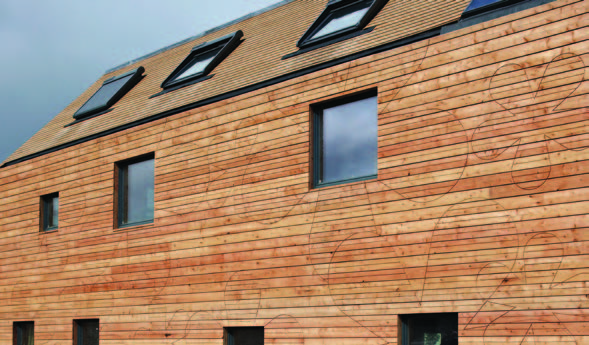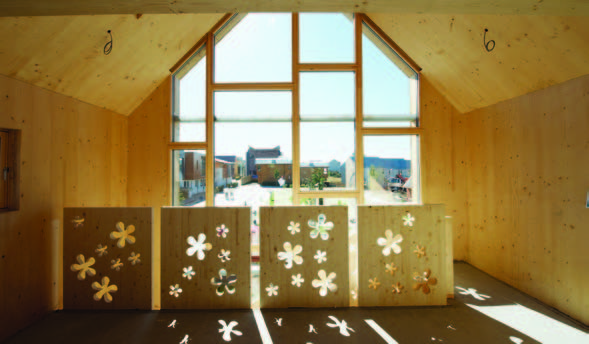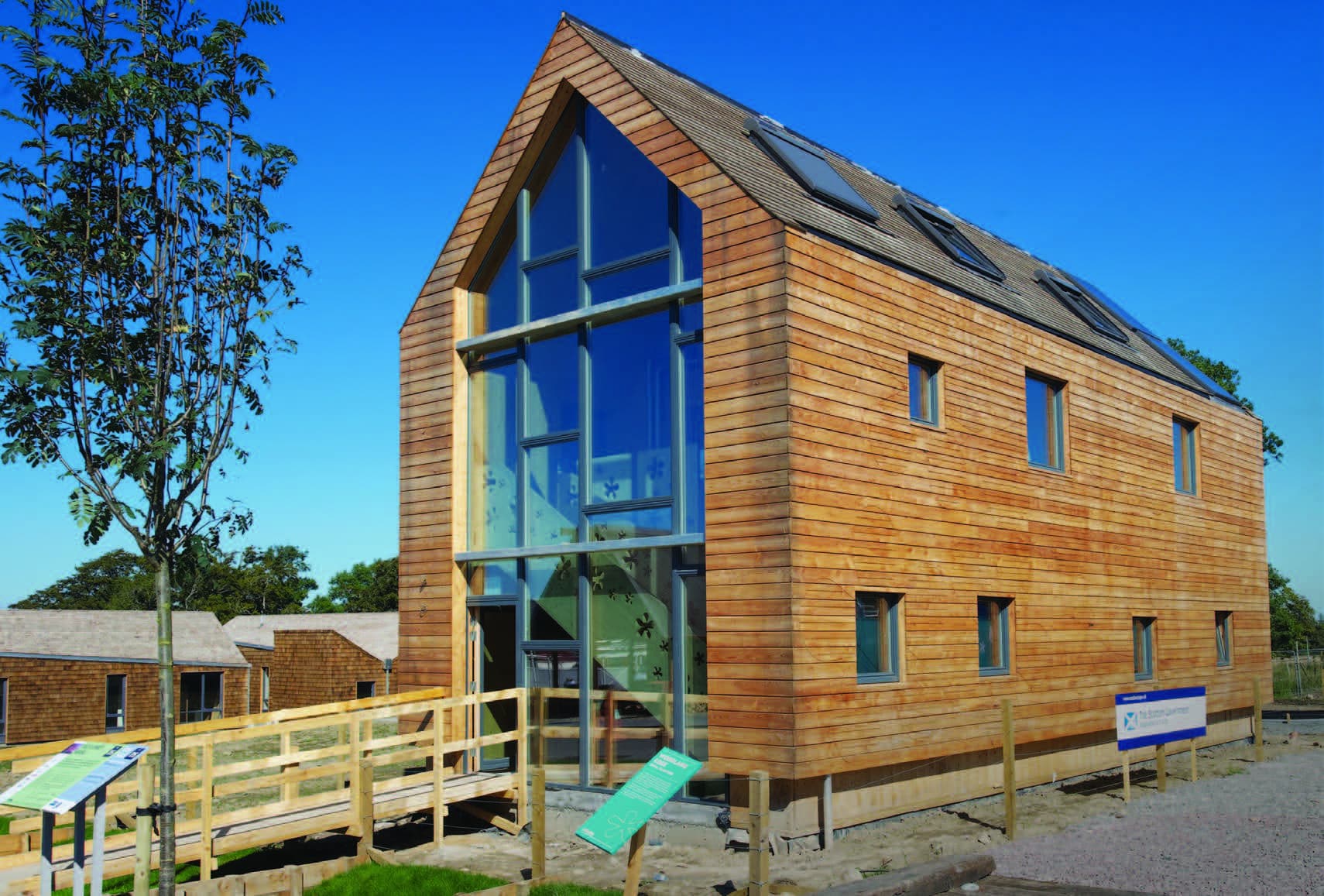The Flower House is a two-storey building which is entered through a bright and welcoming (two-storey) sunspace. The living accommodation on the first floor maximises daylight from the roof lights and provides panoramic views of the Moray Firth, while the ground floor bedrooms take advantage of the south-east aspect.
The south-west facing sunspace acts as a flexible extension to the living room allowing residents to enjoy the views on bright, but less clement days. Equally, the space can be closed down and used as a buffer to the outside in the winter. It also acts as a solar collector.
The design of the space has been refined through computer thermal modelling. This allowed the area, aspect and specification of the glass to be modified. The original louvres were omitted as a result to optimise the benefits of solar gain and heat loss throughout the year.
Timber technologies
The shell of the house is formed using a cross-laminated and highly insulated ‘Pavatherm’ wood fibre panel system from Austria. It is precisely fabricated in the factory so that the house can be built quickly and accurately on site. The insulation has a latex impregnated breathable outer layer providing a secondary waterproofing layer.
The house is clad with horizontal timber boarding, designed to be turned at 120 degrees to form the large daisy motifs.
An innovative underfloor heating system is supplied by a wood-burning stove. Solar panels provide domestic hot water, topped up by heat from the stove during the coldest part of the year. Triple-glazed windows and prefabricated solid timber panel construction provide high levels of airtightness. Energy-efficient light fittings and a whole-house ventilation system with heat recovery all work to minimise energy loss.

Special timber-related features
An extensive consultation and selection process was carried out with Edinburgh Napier University Centre for Timber Technologies. This was to specify timber that satisfied the various, and conflicting, demands of durability, sustainability and price.
The roof had demanding technical requirements and needed to be more resistant to both moisture and fire. This led to an alternative timber selection for the roof: locally sourced Scottish larch and fire retardant treated ‘Platowood’, which is a thermally modified timber.
The cladding has open joints allowing moisture to pass through the timber rainscreen, air to circulate freely, and the construction to dry more readily.

A library of sustainable building materials
Our website includes a web-based resource that showcases sustainable, traditional, innovative, recycled and low carbon building materials. If you are looking for inspiration or information on different types of materials to consider for your project, visit our materials library.

